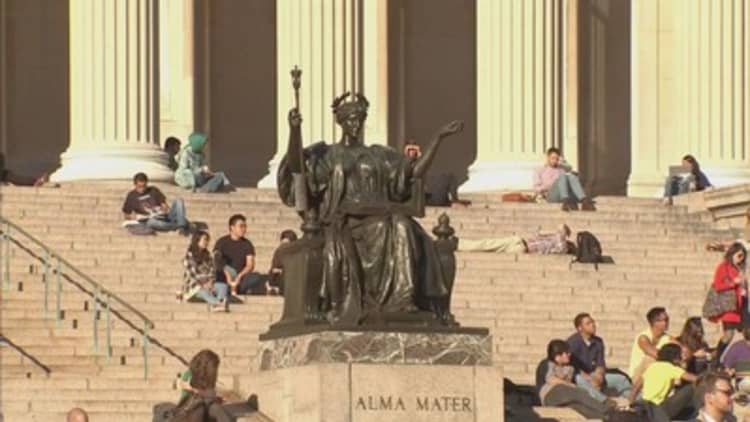The Trump administration's first budget proposes ending a program to encourage student-loan borrowers to go into public service by forgiving their debt to save an estimated $27 billion over the next decade.
Here's how the program works: If you take out a federal student loan, you have your loans forgiven after making 10 years of on-time payments and working for an employer the Department of Education deems to be serving the public good. Qualified employers include local, state and federal government agencies and nonprofit organizations. (Private lenders don't offer this option.)

Some qualified borrowers will be able to use this benefit starting this year because public-service loan forgiveness was created in 2007.
Since 2012, borrowers could certify with the Department of Education that their employment would qualify them for public-service loan forgiveness. The number of borrowers who have been approved by the department has grown rapidly, to 552,931 as of the end of last year. (See chart below.)
The Trump administration wants to end public-service loan forgiveness for federal loans issued July 1, 2018, or later, except those provided to borrowers to finish their current course of study.
To be sure, the budget is a wish list, and Congress sets the spending priorities for the federal government. However, eliminating public-service loan forgiveness has its supporters among people who want to change how limited federal student aid is distributed to students.
"Public-service loan forgiveness is a program that mainly benefits grad students," said Jason Delisle, a resident fellow at the American Enterprise Institute, a conservative think tank.
The median debt load of those enrolled in public-service loan forgiveness is more than $60,000, and nearly 30 percent of people who have been certified for the program have borrowed more than $100,000, according to a 2016 analysis Delisle undertook for the Brookings Institution (see chart below).
One problem with controlling the costs of public-service loan forgiveness is that the Department of Education has an open-ended definition of what public service is, Delisle said.
The Government Accountability Office estimates 25 percent of U.S. workers are employed in jobs that could qualify them for public-service loan forgiveness if they have student loans and know about the program.
Unlike loan forgiveness under income-based repayment plans, public-service loan forgiveness is tax-free to borrowers.
"Public-service loan forgiveness is a redundant benefit because the federal government already offers loan forgiveness through its income-based repayment plans," Delisle said.
Trump's budget did fulfill a campaign promise to propose an income-based repayment plan where borrowers have higher monthly payments but would have their student-loan debt forgiven sooner.
Under Trump's plan, borrowers would contribute 12.5 percent of their income if they chose a repayment plan instead of the 10 percent required under current repayment plans. After 15 years in a repayment plan, borrowers could have their debt forgiven. Currently, borrowers in repayment plans have to wait 20 or 25 years to have their loans canceled.
The proposed plan could potentially help low-income borrowers more because the debt is forgiven sooner than current repayment options.
The administration estimates the federal government would save $74 billion over the next decade by creating a single income-based repayment plan. However, the budget has not specified how the government would pay for the cost of forgiving federal student loans five to 10 years earlier than current repayment plans.
This budget proposal is a big step in the wrong direction. It's turning away from college affordability and will increase student debt.Lauren Asherpresident of the Institute for College Access and Success
Student loan forgiveness through income-based repayment plans doesn't let borrowers completely off the hook. Debt canceled by student-loan repayment plans is taxed as income. Lawmakers should address this flaw with income-based repayment, Delisle said.
While some borrowers may benefit more under Trump's repayment plan, reductions in total federal aid for higher education paint a bleaker picture, said Lauren Asher, president of the Institute for College Access and Success. For example, the budget would cut nearly $150 billion in grant aid, work study and student-loan subsidies that may require millions of students to borrow more to fill that gap.
"This budget proposal is a big step in the wrong direction," Asher said. "It's turning away from college affordability and will increase student debt."
Watch: Student debt forgiveness not so forgiving





